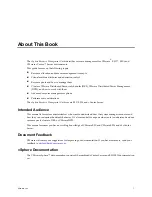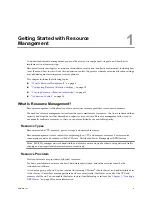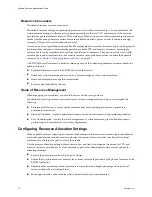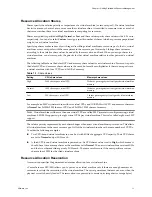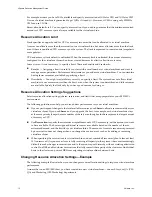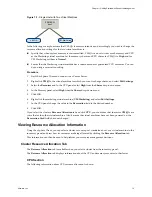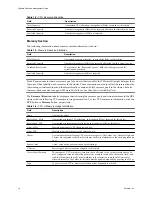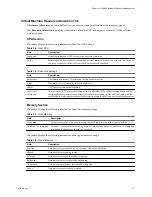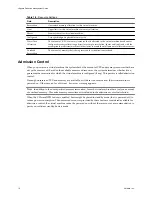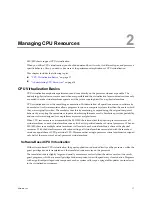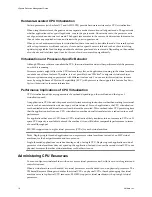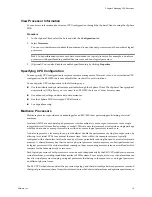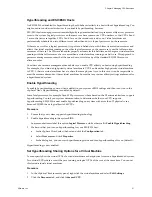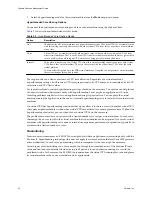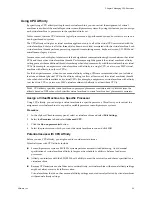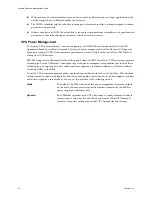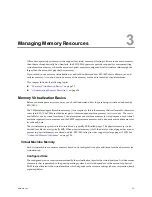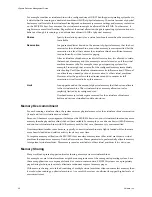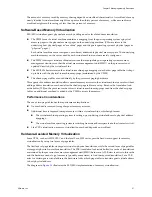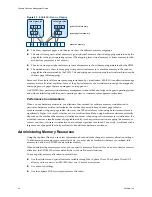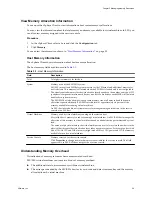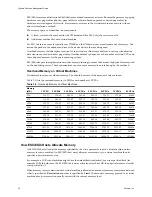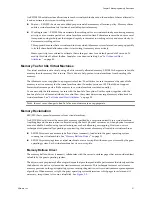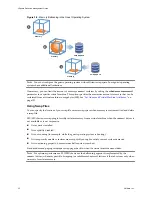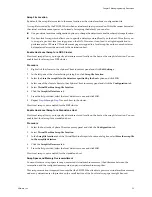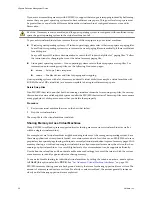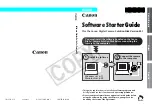
View Processor Information
You can access information about current CPU configuration through the vSphere Client or using the vSphere
SDK.
Procedure
1
In the vSphere Client, select the host and click the Configuration tab.
2
Select Processors.
You can view the information about the number and type of physical processors and the number of logical
processors.
N
OTE
In hyperthreaded systems, each hardware thread is a logical processor. For example, a dual-core
processor with hyperthreading enabled has two cores and four logical processors.
3
(Optional) You can also disable or enable hyperthreading by clicking Properties.
Specifying CPU Configuration
You can specify CPU configuration to improve resource management. However, if you do not customize CPU
configuration, the ESX/ESXi host uses defaults that work well in most situations.
You can specify CPU configuration in the following ways:
n
Use the attributes and special features available through the vSphere Client. The vSphere Client graphical
user interface (GUI) allows you to connect to an ESX/ESXi host or a vCenter Server system.
n
Use advanced settings under certain circumstances.
n
Use the vSphere SDK for scripted CPU allocation.
n
Use hyperthreading.
Multicore Processors
Multicore processors provide many advantages for an ESX/ESXi host performing multitasking of virtual
machines.
Intel and AMD have each developed processors which combine two or more processor cores into a single
integrated circuit (often called a package or socket). VMware uses the term socket to describe a single package
which can have one or more processor cores with one or more logical processors in each core.
A dual-core processor, for example, can provide almost double the performance of a single-core processor, by
allowing two virtual CPUs to execute at the same time. Cores within the same processor are typically
configured with a shared last-level cache used by all cores, potentially reducing the need to access slower main
memory. A shared memory bus that connects a physical processor to main memory can limit performance of
its logical processors if the virtual machines running on them are running memory-intensive workloads which
compete for the same memory bus resources.
Each logical processor of each processor core can be used independently by the ESX CPU scheduler to execute
virtual machines, providing capabilities similar to SMP systems. For example, a two-way virtual machine can
have its virtual processors running on logical processors that belong to the same core, or on logical processors
on different physical cores.
The ESX CPU scheduler can detect the processor topology and the relationships between processor cores and
the logical processors on them. It uses this information to schedule virtual machines and optimize performance.
Chapter 2 Managing CPU Resources
VMware, Inc.
19
Summary of Contents for ESX 4.0
Page 6: ...vSphere Resource Management Guide 6 VMware Inc...
Page 44: ...vSphere Resource Management Guide 44 VMware Inc...
Page 52: ...vSphere Resource Management Guide 52 VMware Inc...
Page 72: ...vSphere Resource Management Guide 72 VMware Inc...
Page 80: ...vSphere Resource Management Guide 80 VMware Inc...



